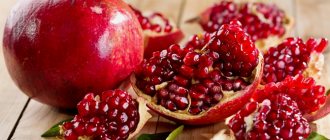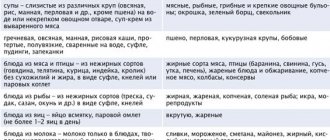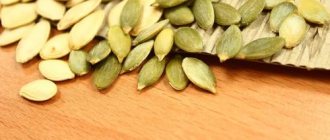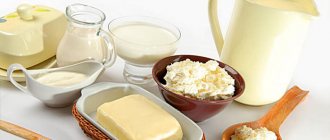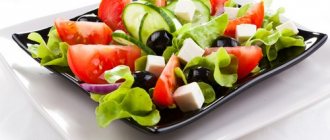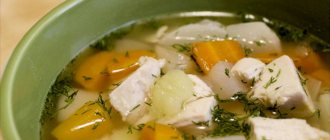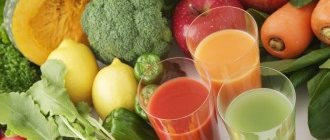Porridge is one of the main dishes on the menu for patients with pancreatitis. They appear in the diet already from 2–3 days after an attack of acute pancreatitis or an exacerbation of a chronic disease, and are subsequently present in the diet every day.
Porridges are nutritious and tasty, and if you follow the cooking instructions, they are well absorbed and digested without loading the pancreas. However, not all cereals are easily accepted during pancreatitis - some cereals are contraindicated or undesirable even during the period of remission.
Let's take a closer look at which porridges can and cannot be consumed during pancreatitis, how to prepare them correctly during different periods of the disease, and how, with the help of porridges, you can expand the range of dishes during remission.
“Forbidden” cereals
In case of exacerbation of pancreatitis, the following cereals are contraindicated:
- millet,
- corn,
- barley,
- wheat,
- legume porridge (peas, lentils, chickpeas).
Corn, millet porridge and legumes are also prohibited during periods of incomplete remission, and if there is persistent improvement, it is undesirable to consume them. If they do appear on the menu, it is very rare; they are introduced slowly, in small portions, well boiled. Barley and wheat porridge are allowed during remission, but not often.
Prohibited cereals in case of pancreatitis
During the period of exacerbation of chronic inflammation in the gland, there are also contraindicated types of cereals. They must be excluded, as the person’s condition may worsen. The list of prohibited foods includes barley, legumes and millet porridge.
These types of cereals require a long digestion process, which puts excessive stress on all organs of the gastrointestinal tract. Due to their high fiber content, legumes are contraindicated.
You must discuss your diet with your doctor.
It is very important to follow all medical recommendations. Only a patient’s responsible attitude towards his health can protect him from complications of the underlying disease. Helpful video:
General features of eating cereals for pancreatitis
During an exacerbation, only approved cereals are allowed. The first one to appear on the menu is rice - it can be eaten on the 2-3rd day of treatment. During the first week, buckwheat, oatmeal, pearl barley and semolina porridge are also introduced.
During the acute phases of the disease, all porridges are cooked semi-liquid, with a viscous consistency. They should be cooked with water or half and half water with milk, without salt, sugar or butter. The porridge is cooked until completely boiled, and then pureed or blended with a blender until an almost homogeneous structure is obtained. If you have a coffee grinder or blender with a blade for solid foods, it is easier to first grind the cereal and then cook the liquid porridge.
During remission, when switching to a diet without mechanical sparing, porridge can and should be prepared without grinding (this preserves more valuable substances), including crumbly, with the addition of salt, sugar and a small amount of butter. With normal tolerance, porridge with milk is allowed without dilution with water.
Hercules: benefits and how to prepare it
This porridge is in many ways similar to oatmeal - they are made from the same raw materials. Hercules flakes exhibit many beneficial effects. The most important among them are the normalization of the digestive system and the reduction of bad cholesterol levels. Oatmeal also contains small amounts of enzymes that are similar in activity to pancreatic enzymes. It is for this reason that porridge is so useful in cases of pancreatitis. In addition, the product contains a lot of proteins, B vitamins, tocopherol, microelements (calcium, manganese, iron, zinc).
In case of inflammation, you can cook porridge initially in water. Then, as you recover, doctors allow you to cook porridge with milk. To do this, add the flakes to boiled water and boil for fifteen minutes. Next you need to pour in hot milk and add a little sugar. You can also add nuts, banana or dried fruits. You should not add too much milk, as this may have a negative effect on the gland.
Features of different cereals
Rice porrige
Rice (unpolished) and porridges made from it have a lot of useful properties:
- rich in complex carbohydrates, providing a long-lasting feeling of satiety;
- are easily digested and do not create a burden on the diseased organ;
- do not irritate the pancreas and other parts of the gastrointestinal tract;
- rice is an excellent absorbent, absorbing and removing toxins from the intestines;
- Rice porridge envelops the walls of the gastrointestinal tract, protecting the mucous membrane from negative influences.
But it should be remembered that rice has a fixing effect, so it is not advisable to use it for constipation due to pancreatitis.
Oatmeal
Like rice, oatmeal is a mucous porridge that gently envelops the walls of the digestive tract; It is easily digestible and is rich in protein and easily digestible vegetable fat. The beneficial properties of oats include the ability to suppress aggressive pancreatic enzymes that support and trigger inflammation in the gland. Unlike rice, oatmeal stimulates intestinal motility and is indicated for constipation.
Semolina
Semolina porridge has the most delicate consistency, which makes it extremely convenient for use in the diet - there is no need for additional grinding of the cooked porridge. Semolina is easily digestible and quickly satisfies the feeling of hunger, does not irritate the mucous membranes of the stomach and intestines at all, does not burden the pancreas, and is an absolutely dietary product. But at the same time, semolina is relatively poor in vitamins and can cause constipation, so it is not suitable for daily use.
Buckwheat
Among all cereals, buckwheat has the richest vitamin and mineral composition and contains the most easily digestible vegetable protein, which makes it simply irreplaceable for patients with pancreatitis.
Barley porridge
Viscous pearl barley porridge is a mucous porridge that can envelop the walls of the gastrointestinal tract, protecting them from the action of the active components of digestive juices and other aggressive substances and at the same time absorbing toxins. But pearl barley is quite hard and requires thorough boiling followed by grinding for good absorption, especially during periods of exacerbations or incomplete remission.
Wheat and barley porridge
Wheat and barley cereals are rich in gluten and other complex carbohydrates, and therefore provide a long-lasting feeling of fullness. In addition, wheat and barley porridges are an excellent source of B vitamins. On the other hand, large amounts of carbohydrates are poorly absorbed against the background of pancreatitis and are subjectively difficult to tolerate for many patients (feeling of fullness in the stomach, nausea), so wheat and barley porridges are allowed only during time of remission and not too often.
Millet porridge
Millet polysaccharides against the background of pancreatitis are very poorly digested and can provoke an exacerbation, so porridge is included in the category of prohibited foods. But during remission of chronic pancreatitis, it can be included in the menu from time to time.
Corn porridge
Corn grits remain hard even after prolonged cooking and contain a lot of coarse fiber, and therefore its use in the diet of patients is extremely undesirable.
Bean porridge
All legumes are rich in coarse fiber, which causes bloating, pain and flatulence in pancreatitis. Therefore, porridges made from legumes are strictly prohibited, including during remission.
Which cereals can be included in the menu in case of inflammation of the pancreatic gland parenchyma
Not all cereals are useful during the onset of pathology. Some of them do more harm than good. Therefore, it is very important to know what cereals you can eat for pancreatitis. Experts say that these types of cereals will not harm the patient’s health:
- Buckwheat.
- Oatmeal.
- Rice.
- Manna.
- Pearl barley.
- Linen.
Such dishes are not only allowed, but will also bring a lot of benefits to the patient. Doctors also identify a number of cereals that can be eaten for pancreatitis, but in limited quantities. Among these cereals:
- Wheat.
- Corn.
The patient will receive little benefit from eating such a side dish. They usually provide a quick onset of satiety. But it is usually false, since cereals have a lot of gluten. There are not enough useful microelements and vitamins in these cereals. Therefore, it is better to exclude them from the diet.
Porridge is delicious!
Many people do not like porridge since childhood, considering them, although healthy, but not very tasty food. Of course, with an exacerbation of pancreatitis, viscous pureed unsweetened porridge without oil can hardly be called a masterpiece of culinary art, they quickly get boring, and patients eat porridge extremely reluctantly.
But during the period of remission, they can be prepared in such a way that the porridge will become a real feast of taste even for gourmets and can significantly diversify the usual diet. How to do it?
The following ingredients can add flavor to the porridge, and often dramatically change it, making it completely unrecognizable:
- Butter, sugar, jam or honey - it is quite acceptable to consume them during remission.
- Fresh or frozen berries (strawberries, blueberries, etc.) - add them before removing the porridge from the stove, stir and let it brew under the lid.
- Fresh fruits - pieces of banana, peach, apple, apricot go well with milk porridges.
- Pumpkin is a great addition to milk rice porridge; you can also cook oatmeal with pumpkin. To prepare milk porridge with pumpkin, boil the cereal in milk, and the pumpkin pieces separately in water until soft. 2-3 minutes before readiness, add pumpkin to the porridge and stir.
- Raisins - rinse them and pour boiling water over them, and then add to the porridge.
- You can sprinkle the porridge with crushed nuts or a small amount of seeds.
Methods for preparing porridge
The taste, appearance and consistency of porridge largely depend on the cooking methods. Try not to cook porridge on the stove, but cook it in a pot, where the cereal becomes soft and boiled over a long period of simmering, but at the same time retains most of the vitamins and valuable substances. Very tasty, crumbly, dairy-free and boiled milk porridges are made in a slow cooker and pressure cooker.
Also, do not forget that porridges can be not only dairy-based - crumbly porridges (rice, buckwheat, pearl barley) can be served as a side dish with meat, poultry or fish, with stewed vegetables, herbs, gravy and other sauces. In addition, different cereals can be cooked at the same time - wheat and rice, oat and wheat cereals, rice and oatmeal go well together.
Summary
Porridge for pancreatitis is an extremely healthy dish; it is recommended to eat it daily, at any meal (you can do it 2 times a day - different cereals). Each of the porridges has its own advantages, but to expand the diet and ensure adequate intake of all groups of vitamins and minerals, you need to alternate porridges from different cereals, using all possible methods of preparing them and approved additives.
Pediatrician and pediatric endocrinologist. Education: Faculty of Pediatrics, SSMU. I have been working since 2000, and since 2011 as a local pediatrician in a children's clinic. In 2016, I completed my specialization and received a certificate in pediatric endocrinology, and since the beginning of 2022 I have been additionally providing appointments as…
Comments
Tell me, can you eat porridge hot?
Hello! No, neither porridge nor other dishes can be eaten hot if you have pancreatitis. All dishes can only be eaten warm, the maximum temperature is approximately 50-60°C, that is, slightly hot.
Hello! Barley is ground pearl barley. Why is pearl barley on the list of allowed cereals? and barley is prohibited
To be able to leave comments, please register or log in to the site.
Those people who are faced with a disease such as pancreatitis know firsthand that in order to feel normal they need to adhere to a special diet.
The menu of people suffering from chronic inflammation of the pancreas consists of steamed fish and meat, soups and, of course, various cereals. Exactly what cereals can be eaten with pancreatitis and how they can be consumed will be described in this material.
Pearl barley: useful qualities and preparation methods
Pearl barley also has beneficial properties. It helps restore the normal course of metabolic processes. The beneficial effect is also manifested on the bone, digestive, and cardiovascular systems. Also, eating the dish normalizes the activity of the urinary and endocrine systems. The condition of the skin also improves significantly.
Cereals contain the following elements necessary for the body:
- Cellulose.
- Vitamins PP, A, E, group B.
- Proteins.
- Amino acids.
- Microelements (potassium, manganese, bromine, iodine).
Due to the fact that this cereal is considered heavy for the gastrointestinal tract, it must be prepared according to a special recipe. Initially, it needs to be rinsed several times with hot water and filled with liquid (kefir, water, yogurt). The optimal ratio is a glass of cereal per liter of liquid and leave to soak overnight. In the morning you need to drain the excess liquid and add boiled water (or milk) in a ratio of 1:3. The dish must be cooked for six hours.
Corn
When consuming this porridge for chronic pancreatitis, it is necessary to take into account some features. The first limitation is the frequency of use of this product. It should not be eaten often due to the fact that corn has hard fibers. The second aspect is the cooking process. It should be prepared with low-fat milk or water.
The recipe for making such a delicacy is extremely simple. Corn grits must be boiled using water or low-fat milk for about twenty minutes. After this, you need to wrap the pan with a towel and wait until it steams. During an exacerbation of inflammation of the pancreas, corn porridge should be avoided.
Corn for cholecystopancreatitis
This disease is a combination of pancreatitis and cholecystitis. In the first case, inflammation of the pancreas is observed, in the second, the gallbladder suffers. In such a situation, a violation of the outflow of bile and a change in its physical and biochemical properties occurs.
Therefore, if you have cholecystopancreatitis, you should follow a diet. It helps normalize the patient's condition and restore the function of the gallbladder. With this diagnosis, it is forbidden to eat corn on the cob or its grains.
To achieve a therapeutic effect, you can include corn silk-based products in your diet. They are thread-like fibers that are found around the cob.
The product copes well with kidney diseases, gastrointestinal ailments and bladder inflammation
The product contains many vitamins, essential oils, microelements, and tanning components. Thanks to this, the stigmas have a choleretic effect and cleanse the gallbladder of stones.
The product also helps neutralize toxins, restore metabolism and strengthen the immune system.
Buckwheat
Nutritionists advise adding buckwheat to the diet for people with chronic inflammation of the pancreas.
Buckwheat is excellent as a product that is useful for inflammation of the pancreas.
Buckwheat can rightfully occupy a leading position in composition among other competitors. It contains a huge amount of healthy vegetable protein and a unique set of amino acids. Such cereals can almost completely help replace the consumption of meat products, if necessary.
The specificity of the diet for chronic pancreatitis is due to a decrease in the amount of carbohydrates. Therefore, buckwheat can take a leading place in the patient’s diet. Buckwheat also contains a large amount of fiber. It helps normalize digestion and helps cleanse the intestines.
The use of buckwheat porridge for pancreatitis is allowed from the fifth day after the prescription of a therapeutic diet. But not before the patient’s pain is relieved.
It can be consumed during an acute inflammatory process in the following form: after preparing heavily boiled cereal, it must be thoroughly wiped. It should be eaten without adding oil, spices, sugar and salt.
It is important to know that you should not eat buckwheat every day. The diet can be diluted with other cereals.
During chronic pancreatitis, the preparation of crumbly cereal is allowed. You can add salt and oil, both vegetable and butter, to it.
It is worth remembering that porridges for chronic pancreatitis should not contain mushrooms and fried vegetables.
Allowed
It is important to understand that even the healthiest cereals for pancreatitis should be consumed regularly, but in dosage. Don't get carried away with large portions. What cereals are considered permitted and healthy foods for pancreatitis:
cereals for pancreatitis
- Buckwheat. It is allowed to be administered by the end of the first week of exacerbation of the disease.
- Oatmeal. This type of cereal is very effective in exacerbating the disease.
- Rice. This natural absorbent is excellent for removing harmful substances from the patient’s body.
- Manna. It has a beneficial effect on pancreatitis, envelops and moves unhindered through the intestines.
- Pearl barley. The viscous consistency perfectly envelops the mucous membrane of the gastrointestinal tract, but for good digestibility it requires careful grinding before use.
- Linen. Used for chronic pancreatitis.
benefits of cereals
Thanks to its beneficial properties, the patient’s body is quickly saturated with necessary substances, elements, vitamins and quickly recovers.
Wheat
It requires caution when used during pancreatitis. Coarse grinding can cause discomfort or even pain in the patient. To avoid this, wheat porridge for pancreatitis should be added to the diet no earlier than 5-6 days. This cereal must be prepared without adding spices, salt and oil. Experts allow the use of this porridge even during an exacerbation, but it is better not to risk it and consume it no more than 2 times a week during a stable remission.
Oatmeal
Oatmeal for pancreatitis is one of the main products. It can rightfully be considered an important separate dish in a therapeutic diet. Oats are a grain that is number one in vitamin B1. A distinctive feature of oatmeal is the fact that it contains a substance such as serotonin. This hormone is designed to improve your mood, and the energy gained from eating oatmeal can last you the whole day.
Oatmeal helps the body absorb fats and carbohydrates. This is due to the fact that it contains enzymes that are similar to the enzymes produced by the pancreas. It is precisely this fact that makes oatmeal so necessary in a therapeutic diet for inflammation of the pancreas.
Also, consuming this product helps stabilize blood cholesterol levels.
When eating oatmeal during pancreatitis, it is necessary to take into account some features. It contains a large amount of fiber, which does not allow it to be added to the patient’s menu during an exacerbation of inflammatory processes in the pancreas.
Experts recommend cooking oatmeal in water. If the patient experiences any negative sensations after consuming it, then such a product should be discarded.
During remission, it is allowed to add a small amount of butter and sugar to it.
Corn and acute pancreatitis
When a patient is diagnosed with an acute form of pancreatic pathology that has arisen against the background of acute cholecystitis, gallstone pathology in the gallbladder cavity, or other factors, during the first 2-3 days, only alkaline water without gases is allowed for consumption. From the third day, light food that does not contain animal fats and acids is gradually introduced into the patient’s diet.
Corn for acute pancreatitis is also included in the list of prohibited foods, due to the fact that it belongs to a number of rough foods that require the organs of the digestive tract to increase their efficiency and enhance gastric secretion for its normal absorption.
After consuming this product in the abdominal cavity, even a healthy person may experience a feeling of heaviness, let alone patients with acute pancreatitis.
It should also be noted that corn contains a high concentration of starch, the digestion of which requires an increase in the secretion of pancreatic juice, which will enhance the functionality of the affected pancreas, and in case of acute pathological inflammation this should not be allowed. Otherwise, an increase in the concentration of pancreatic enzymes can trigger the activation of serious complications, including pancreatic necrosis.
Menu for pancreatitis for a week
Our readers successfully use Monastic Tea to treat gastritis and ulcers. Seeing how popular this product is, we decided to bring it to your attention. Read more here...
Pancreatitis is inflammation of the pancreas. With this disease, it is necessary to adhere to dietary nutrition, regardless of the form in which it occurs. First of all, it is important to know that the menu for pancreatitis for a week is selected purely individually. What is prohibited to be consumed during an exacerbation is allowed during the remission stage.
For chronic pancreatitis, the diet consists of consuming food with minimal acidity and spices. All dishes are prepared exclusively with water or steam. If it occurs in an acute form, during the first 24 hours the patient drinks only clean water. So, he should consume two liters of water per day. After a few days, liquid soups, cereals, and purees are allowed.
How long to follow the diet?
This question interests almost every patient with pancreatitis. As a rule, a menu for a week for pancreatitis is drawn up. But you need to follow a diet, especially in advanced cases, almost constantly. You will have to eat dishes boiled, baked or cooked in a double boiler. You need to give up fried, salty, pickled, smoked and alcoholic drinks forever, so as not to worsen your condition.
List of permitted products:
- chicken, turkey, rabbit, veal meat. You can make meatballs, cutlets from them, or cook them in portions;
- fish. Steam or bake in foil;
- omelette. If you want a boiled egg, it should be soft-boiled;
- pasta only in the form of soups. Porridge is prepared from buckwheat, semolina, rice and oatmeal;
- Ryazhenka, kefir, low-calorie yogurt.
The menu should include only white bread, which must be dried in the microwave in advance. In fresh form, it is prohibited.
This is what the menu looks like
- Breakfast: oatmeal with water (if there are no contraindications, you can have milk). You can add a little honey for taste;
- Lunch: vegetable soup without cabbage, steamed fish;
- Dinner: chicken breast with stewed carrots or zucchini.
